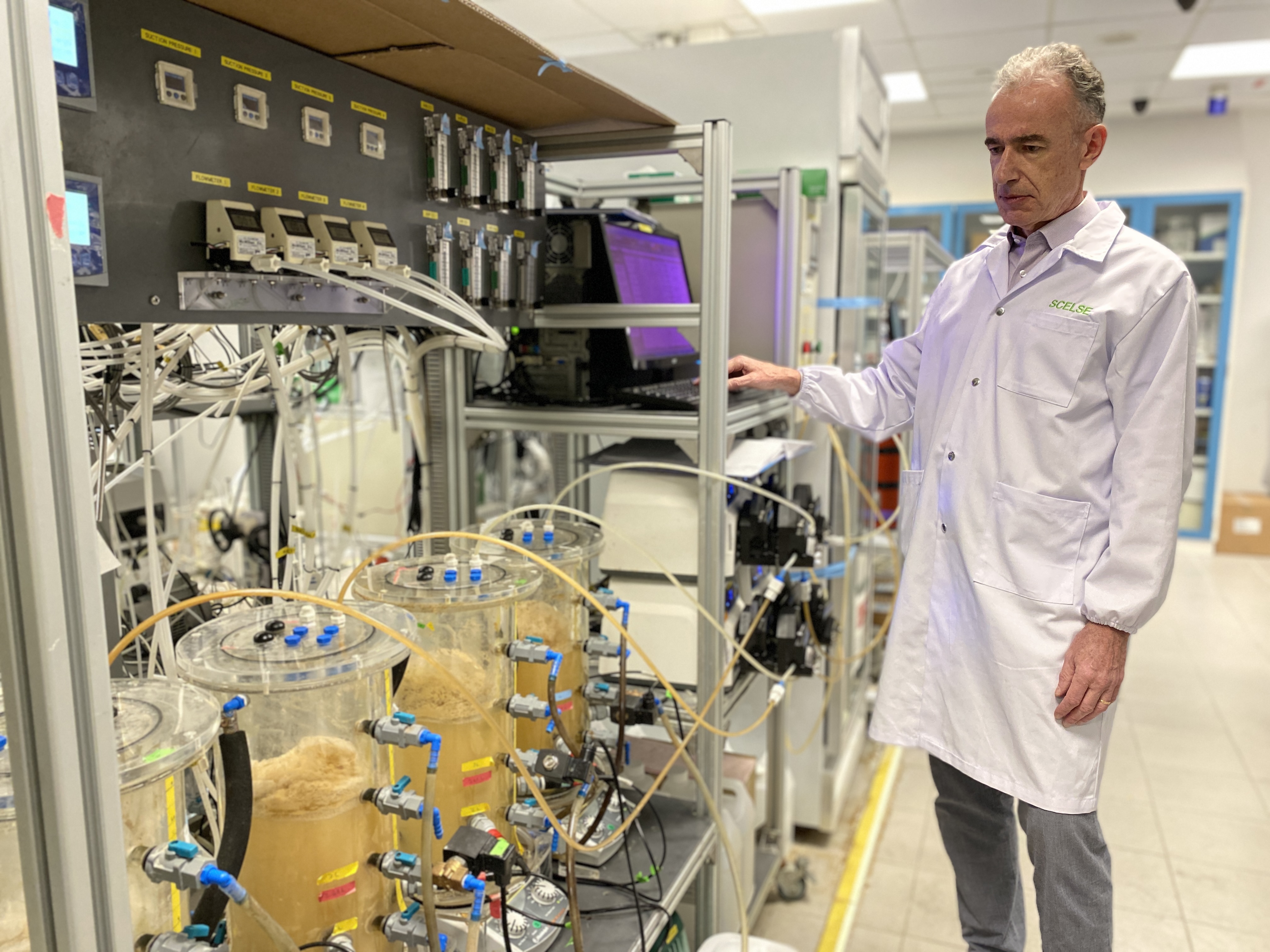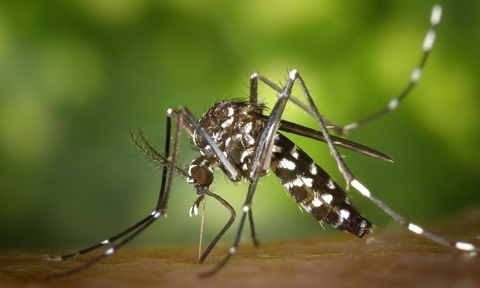Removing phosphorus with bacteria
Singapore’s national water agency PUB will consider the study’s results in the design of future water reclamation plants.

NTU Prof Stefan Wuertz with vats in which the experiments with bacteria and wastewater were conducted. Credit: SCELSE.
High levels of phosphorus in treated wastewater can be problematic if discharged into water bodies. This is because the nutrient encourages the rapid growth of algae. When the algae cells die and decompose, they deplete the water of oxygen and may release toxins, killing aquatic life such as fish.
However, current biological methods to remove phosphorus only work at cooler temperatures of 25 degrees Celsius and below, making them unsuitable for warmer tropical conditions. With global warming becoming ever present, new methods are needed.
Scientists at the Singapore Centre for Environmental Life Sciences Engineering (SCELSE) at NTU and the National University of Singapore have found a way to use bacteria present in wastewater treatment plants, called Candidatus Accumulibacter, to remove phosphorus at higher temperatures.
NTU Professor Stefan Wuertz, SCELSE’s Deputy Centre Director, who led the research team, says: “The bacteria are neither harmful to people nor the environment. They take up phosphorus from wastewater in excess of what is needed for their growth and store the nutrient as polyphosphate granules.”
In a recent experiment, the scientists grew the bacteria in reactors kept at a neutral pH and at temperatures from 30 to 35 degrees Celsius. After six hours, the bacteria removed most of the phosphorus from the wastewater. This continued to be observed over a span of 300 days.
Singapore’s national water agency PUB, which was also involved in the research, will consider the study’s results in the design of future water reclamation plants.
---
The study “Global warming readiness: Feasibility of enhanced biological phosphorus removal at 35 °C” was published in Water Research (2022), DOI: 10.1016/j.watres.2022.118301.
The article appeared first in NTU's research & innovation magazine Pushing Frontiers (issue #21, December 2022).



.tmb-listing.jpg?Culture=en&sfvrsn=82921582_1)

.tmb-listing.jpg?Culture=en&sfvrsn=370a7c71_1)

.tmb-listing.jpg?Culture=en&sfvrsn=ab6472c8_1)